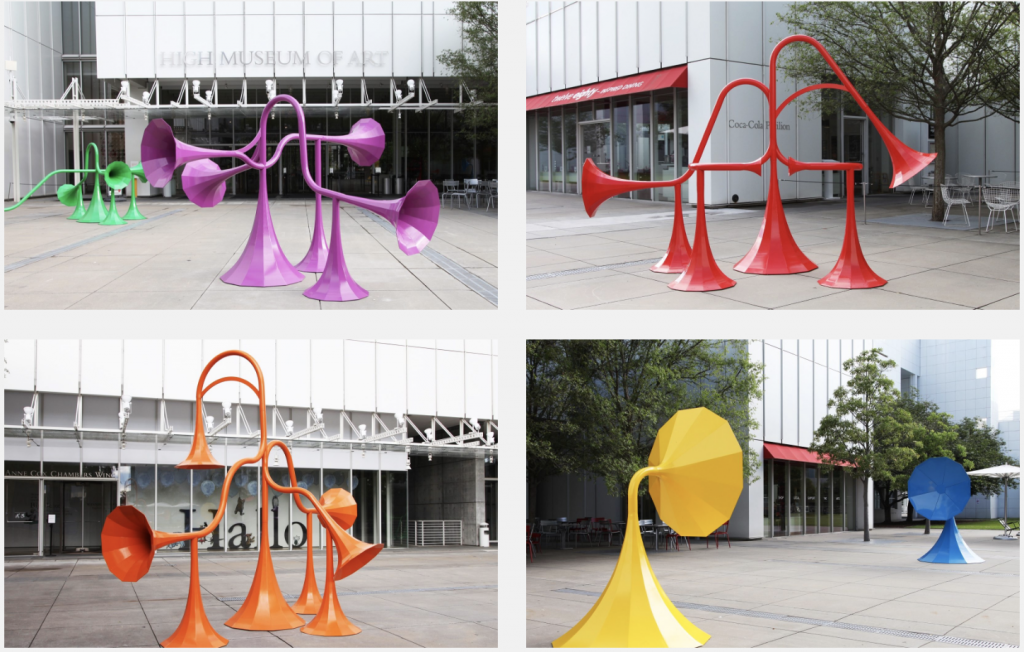The piece I chose to focus on this week is called Sonic Playground, by Yuri Suzuki Design (as they collaborated with High Atlanta). Essentially, Sonic Playground is an sound installation based outside which is made up of a collection of colorful sculptures which transmits as well as modifies sound in different and intriguing ways.

This interactive sound display is used by sound being manipulated and changed based on where one is standing. For example, talking through one end of the sculpture will twist the sound of the voice as it travels to be received by another person standing and listening at the other end of the sculpture.
According to the article, Luca Dellatorre used Grasshopper to develop the pieces in this sculpture piece, which is a “parametric design plug-in in Rhinoceros”. Dellatorre wrote a plug-in which is a 3D raytracing tool which lets the audience choose a source of sound and send that in a precise direction. He used this method in order to test the different sounds that could be made and therefore, evaluate certain shapes for the mirrors and the bells.
I am intrigued by this piece mainly because of its interaction between the physical space around it and the users. The way the bells are positioned around the different sculptures are interesting in that the users who are experiencing this piece will have to maneuver their heads and their bodies certain ways to properly interact with the sculpture.
![[OLD FALL 2019] 15-104 • Introduction to Computing for Creative Practice](wp-content/uploads/2020/08/stop-banner.png)